In this tutorial we will learn what capacitor is, how it works and take a look at some basic application examples. You can watch the following video or read the written tutorial below.
Overview
There’s almost no circuit which doesn’t have a capacitor on it, and along with resistors and inductors, they are the basic passive components that we use in electronics.
What is Capacitor?
A capacitor is a device capable of storing energy in a form of an electric charge. Compared to a same size battery, a capacitor can store much smaller amount of energy, around 10 000 times smaller, but useful enough for so many circuit designs.
Capacitor Construction
A capacitor is constructed out of two metal plates, separated by an insulating material called dielectric. The plates are conductive and they are usually made of aluminum, tantalum or other metals, while the dielectric can be made out of any kind of insulating material such as paper, glass, ceramic or anything that obstructs the flow of the current.
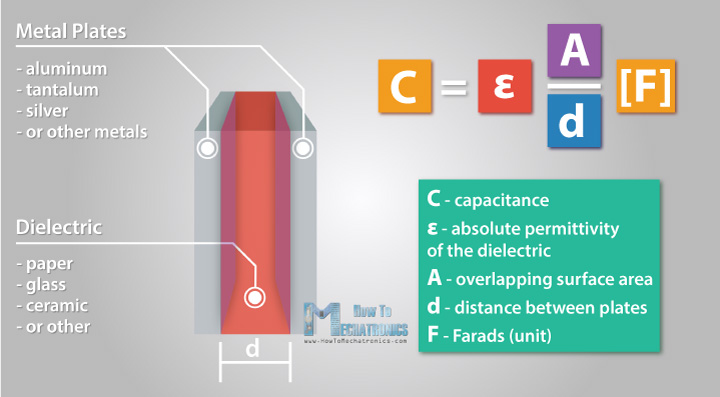
The capacitance of a capacitor, measured in farads, is directly proportional to the surface area of the two plates, as well as the permittivity ε of the dielectric, while the smaller distance between the plates the greater capacitance. That being said, now let’s take a look how a capacitor works.
How Capacitor Works
First, we can note that a metal typically has an equal amount of positively and negatively charged particles, which means it’s electrically neutral.
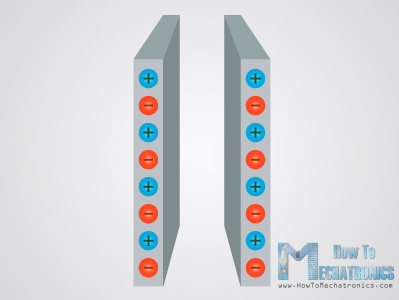
If we connect a power source or a battery to the metal plates of the capacitor, a current will try to flow, or the electrons from the plate connected to the positive lead of the battery will start moving to the plate connected to the negative lead of the battery. However, because of the dielectric between the plates, the electrons won’t be able to pass through the capacitor, so they will start accumulating on the plate.

After a certain number of electronics accumulated on the plate, the battery will have insufficient energy to push any new electronics to enter the plate because of the repulsion of those electronics which are already there.
At this point, the capacitor is actually fully charged. The first plate has developed a net negative charge, and the second plate has developed an equal net positive charge, creating an electric field with an attractive force between them which holds the charge of the capacitor.
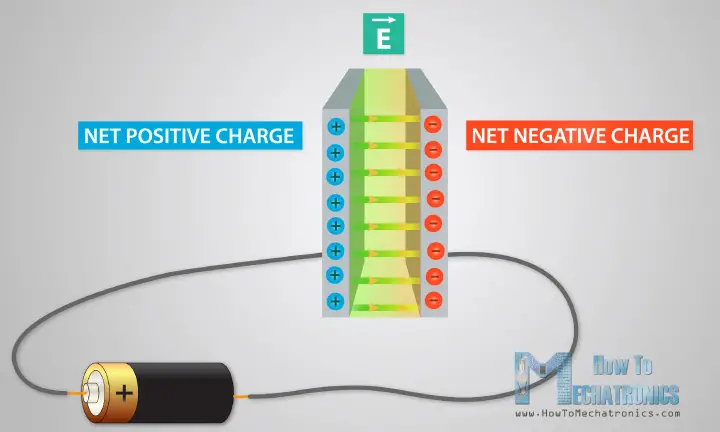
Capacitor Dielectric Working Principle
Let’s take a look how the dielectric can increase the capacitance of the capacitor. A dielectric contains molecules that are polar which means that they can change their orientation based on the charges on the two plates. So the molecules align themselves with the electric field in such a way enabling more electrons to be attracted to the negative plate, while repelling more electrons out of the positive plate.
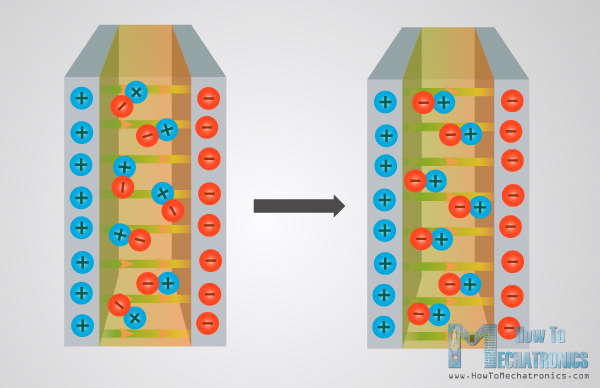
So, once the it is fully charged, if we remove the battery, it will hold the electric charge for a long time, acting as energy storage.
Now, if we shorten the two ends of the capacitor through a load, a current will start flowing through the load. The accumulated electrons from the first plate will start moving to the second plate, until both plates become back again electrically neutral.
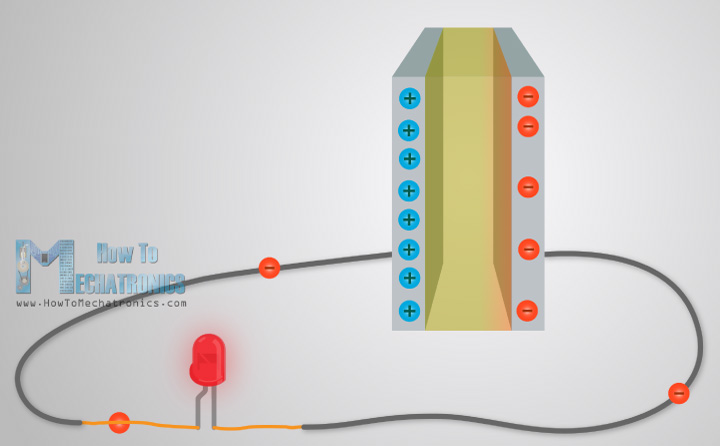
So that’s the basic working principle of a capacitor and now let’s take a look at some application examples.
Capacitor Applications
Decoupling (Bypass) Capacitors
Decoupling capacitors or Bypass capacitors are a typical example. They are often used along with integrated circuits and they are placed between the power source and the ground of the IC.

Their job is to filter any noise in the power supply, like voltage ripples which occur when the power supply for a very short period of time drops its voltage or when a portion of a circuit is switched causing fluctuations in the power supply. At the moment when the voltage drop occurs the capacitor will temporary act as a power supply, bypassing the main power supply.
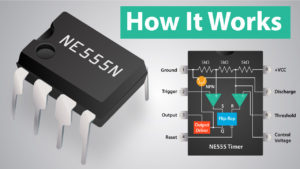
See Also
555 Timer IC Working Principle
AC to DC Converter
Another typical application example are capacitors used in DC adapters. For converting the AC voltage into a DC voltage a diode rectifier is usually used, but without the help of capacitors it won’t be able to do the job.
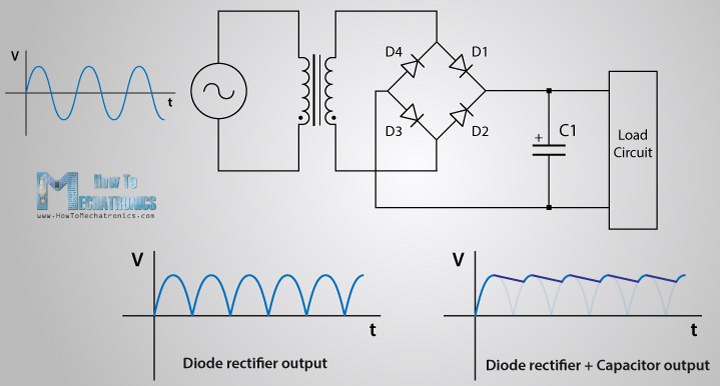
The output of the rectifier is a waveform. So while the output of the rectifier rises the capacitor charges, and while the output of the rectifier declines, the capacitor discharges and in that way smooth the DC output.
Related: What is Schmitt Trigger and How It Works
Signal Filtering
Signal filtering is another application example of capacitors. Because of their specific response time they are able to block low frequency signals while allowing higher frequencies to pass through.

This is used in radio receivers for tuning out undesired frequencies and in crossover circuits inside speakers, for separating the low frequencies for the woofer and the higher frequencies for the tweeter.
Capacitors as Energy Storage
Another rather obvious use of the capacitors is for energy storage and supply. Although they can store considerably lower energy compared to a same size battery, their lifespan is much better and they are capable of delivering energy much faster which makes them more suitable for applications where high burst of power is needed.

That’s all for this tutorial, feel free to ask any question in the comments section below.
